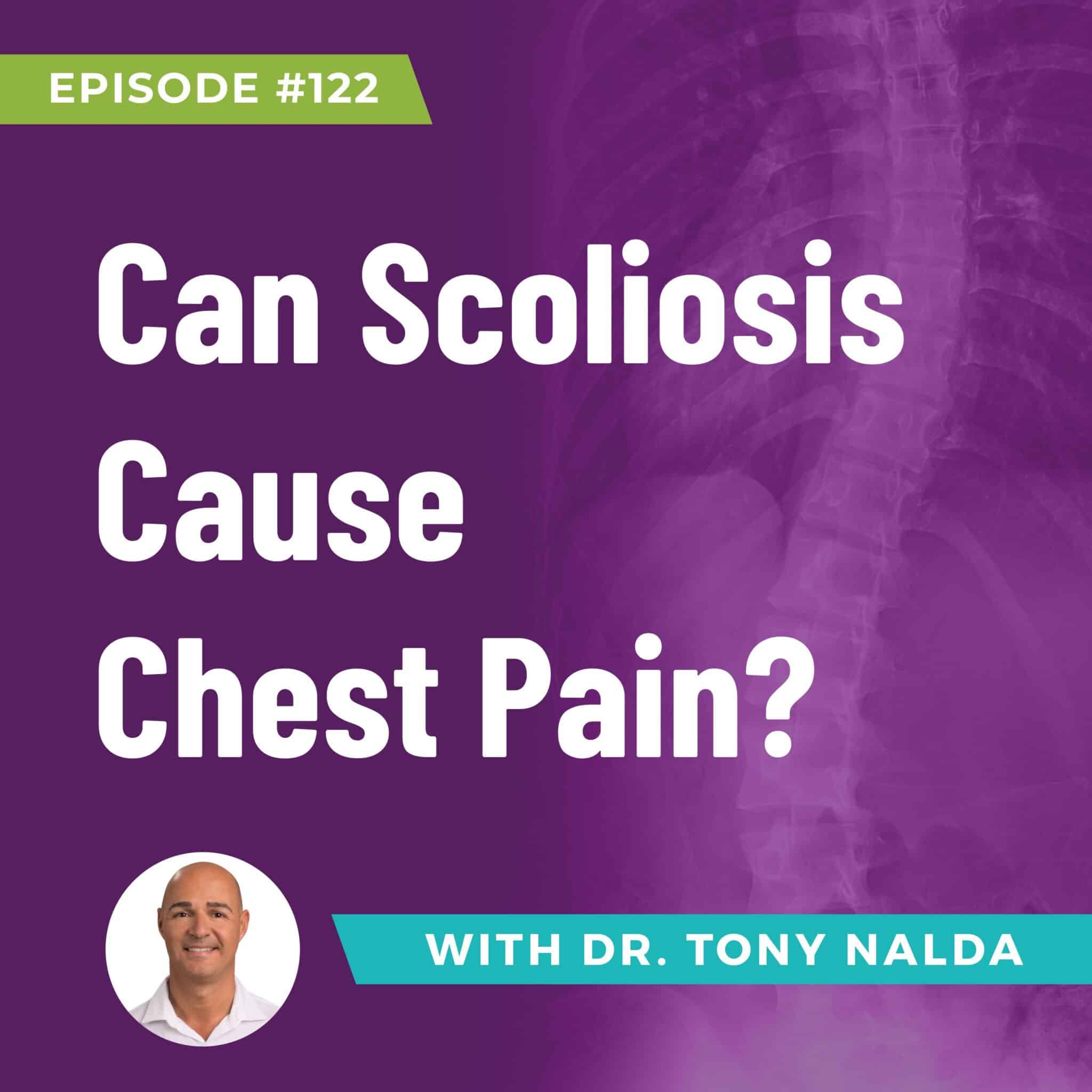Episode 122: Can Scoliosis Cause Chest Pain?
Summary: In this episode, we explore the relationship between scoliosis and chest pain. Our host explains how scoliosis affects the spine and ribcage, potentially leading to chest pain and other symptoms. We also discuss the different severity levels of scoliosis, the limitations of traditional treatment approaches, and the importance of proactive care to prevent and manage symptoms like chest pain.
Key Points:
- Understanding Scoliosis and the Spine:
- Spinal Structure: The spine consists of 24 vertebrae separated by intervertebral discs, which act as shock absorbers and spacers, allowing spinal nerves and the spinal cord to function properly.
- Normal Curvature vs. Scoliosis: While the spine normally has natural curves when viewed from the side and appears straight from the front, scoliosis causes an unnatural sideways curvature and rotation, leading to structural changes.
- What is Scoliosis?
- Definition and Diagnosis: Scoliosis is a structural, progressive condition often diagnosed in adolescence but can also appear in adults. It involves a sideways curvature of the spine with a rotational component. A Cobb angle of 10 degrees or greater, measured via X-ray, confirms the diagnosis of scoliosis.
- Severity Levels:
- Mild Scoliosis (10-25 degrees): Typically does not warrant treatment beyond pain management, despite potential pain or postural issues.
- Moderate Scoliosis (25-40 degrees): Usually, no treatment is recommended unless the patient is an adolescent in an early growth stage, in which case bracing may be advised to slow progression.
- Severe Scoliosis (40+ degrees): Spinal fusion surgery is often the only recommended option, despite its invasive nature and associated risks.
- Very Severe Scoliosis (80+ degrees): The impact on the body can be significant, but the specific effects vary greatly from person to person.
- Can Scoliosis Cause Chest Pain?
- Chest Pain from Thoracic Curves: Thoracic scoliosis or lumbar curves with compensatory thoracic curves can cause asymmetrical development and rotation of the ribs, leading to chest pain.
- Rib and Muscle Involvement: The twisting and deformity of the ribcage associated with scoliosis can cause the ribs to pull on muscles and tissues around the chest, causing pain.
- Spinal Stiffness: As scoliosis progresses, the spine can become stiff, restricting normal movement and leading to chest discomfort.
- Impact on Lung and Heart Function: Severe scoliosis may alter the shape of the ribcage, affecting the lungs' capacity and potentially leading to cardiovascular or pulmonary impairment. However, the exact degree of curvature at which this occurs is highly individual and unpredictable.
- Why Proactive Treatment is Important:
- Proactive treatment, including reducing smaller curves, is vital in preventing the development of severe symptoms such as chest pain.
- Traditional scoliosis treatments often delay intervention until the curve is severe enough to warrant surgery, which can limit the effectiveness of less invasive approaches.
- At the Scoliosis Reduction Center, a proactive approach focuses on reducing spinal curves early to prevent symptoms and improve quality of life.
Conclusion: Scoliosis can indeed cause chest pain through various mechanisms, including rib deformities, muscle strain, and potential lung impairment. A proactive approach to managing scoliosis, even in mild cases, can help minimize these symptoms and improve overall health outcomes. If you have scoliosis or are concerned about chest pain, consider seeking a treatment plan that addresses the structural causes of your symptoms.
Artlist.io 847544
Podcast: Play in new window | Download
Subscribe: RSS
Dr. Tony Nalda
DOCTOR OF CHIROPRACTIC
After receiving an undergraduate degree in psychology and his Doctorate of Chiropractic from Life University, Dr. Nalda settled in Celebration, Florida and proceeded to build one of Central Florida’s most successful chiropractic clinics.
His experience with patients suffering from scoliosis, and the confusion and frustration they faced, led him to seek a specialty in scoliosis care. In 2006 he completed his Intensive Care Certification from CLEAR Institute, a leading scoliosis educational and certification center.
About Dr. Tony Nalda
 Ready to explore scoliosis treatment? Contact Us Now
Ready to explore scoliosis treatment? Contact Us Now








